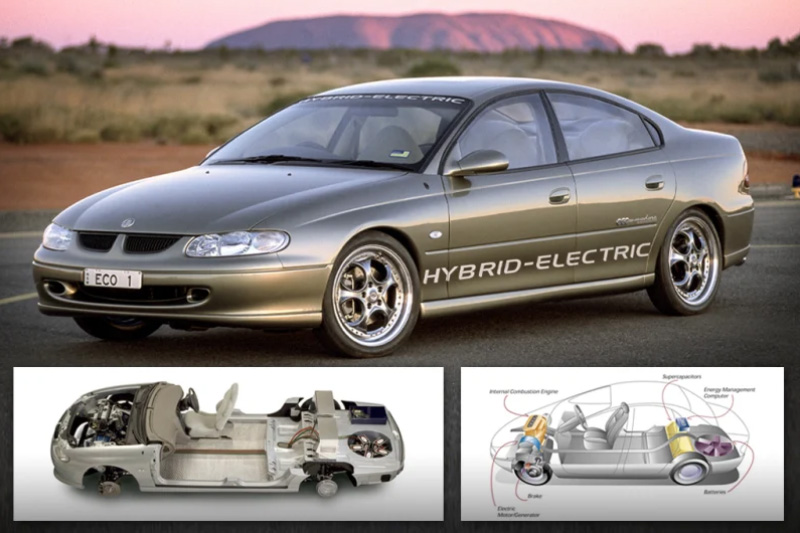

By Patrick Hatch and Nick Toscano
On June 8, 2000, Australia got a glimpse of a possible future for its automotive industry.
It looked familiar enough – like a sleek remake of the best-selling Holden Commodore – as it drove towards Uluru, trailing the Olympic Torch Relay.
But inside the iconic frame was something new to these shores: a hybrid powertrain, combining a four-cylinder engine with a 50kW electric motor.
Holden and the CSIRO, which developed the electric motor, its super-capacitors and lead-acid batteries, said their ECOmmodore concept vehicle used half the petrol of a conventional model and produced dramatically lower emissions.
“It was clearly the way of the future – it was what we had to do,” says Laurie Sparke, who was Holden’s head of innovation at the time and led the carmaker’s two-year collaboration with the CSIRO.
“Environmental issues were already of great concern – fuel economy, emissions, global warming – even at that stage.”
The world’s first mass-produced hybrid car, the Toyota Prius, was months away from going on sale in Europe and the US after it launched in its native Japan three years earlier.
Sparke says he had one meeting with the Holden board to convince them to keep investing in the hybrid concept, arguing the technology was vital for the company’s future success.
“Their response was: ‘our customers want V8s, they don’t want electric cars’,” he says.
Holden’s decision makers may have been right at the time. Now the world has changed, and quickly.
Six years after Holden, Ford and Toyota shut their last local assembly plants, the electric car revolution is now firmly upon us. Advocates predict enormous opportunities for Australia – from mining critical ores to producing battery chemicals.
Some even believe the age of EVs could go so far as reviving a local automotive manufacturing industry.
© ACE EV Group
| Cookie | Duration | Description |
|---|---|---|
| cookielawinfo-checkbox-analytics | 11 months | This cookie is set by GDPR Cookie Consent plugin. The cookie is used to store the user consent for the cookies in the category "Analytics". |
| cookielawinfo-checkbox-functional | 11 months | The cookie is set by GDPR cookie consent to record the user consent for the cookies in the category "Functional". |
| cookielawinfo-checkbox-necessary | 11 months | This cookie is set by GDPR Cookie Consent plugin. The cookies is used to store the user consent for the cookies in the category "Necessary". |
| cookielawinfo-checkbox-others | 11 months | This cookie is set by GDPR Cookie Consent plugin. The cookie is used to store the user consent for the cookies in the category "Other. |
| cookielawinfo-checkbox-performance | 11 months | This cookie is set by GDPR Cookie Consent plugin. The cookie is used to store the user consent for the cookies in the category "Performance". |
| viewed_cookie_policy | 11 months | The cookie is set by the GDPR Cookie Consent plugin and is used to store whether or not user has consented to the use of cookies. It does not store any personal data. |